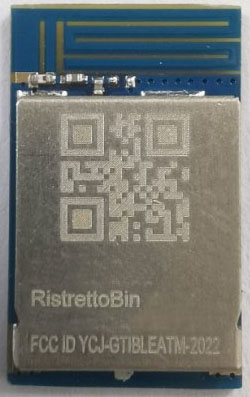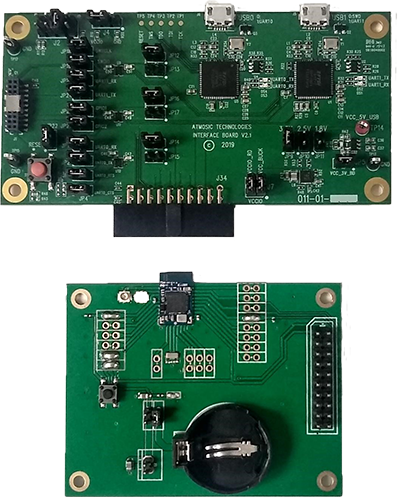RistrettoBin-Atmosic Bluetooth 5 Module- Set of 10
$85.00
Extreme Low Power Bluetooth 5.0 SoC Module
The GTI-ATM2202 module is an extreme low-power Bluetooth® 5 system-on-a-chip (SoC) solution. This innovative module design is based on the extremely low power Atmosic M2 Series Bluetooth wireless platform. The GTI-ATM2202 design incorporates several innovative features that have a dramatic impact on extending the battery life of edge-of-network connected IoT products. This Bluetooth SIG certified Bluetooth Low Energy SoC integrates a Bluetooth 5.0 compliant radio with an ARM® Cortex® M0 application processor, 128 KB, 512 KB or 1MB embedded Flash, 128 KB Random Access Memory (RAM), 256 KB Read-Only Memory (ROM), 4 KB One-Time-Programmable (OTP) memory, and state-of-the-art power management.
The extremely low power ATM2 series SoC with 900uA active Rx and 2.4 mA active Tx full system power and has been designed to extend battery life for the Internet-of-Things (IoT) applications. Support for low duty cycle operation allows systems to run for significantly longer time periods without battery replacement
Key Features
- Compliant with Bluetooth 5.0 standard
- Supports Bluetooth 2 Mbps, 1 Mbps, 500 kbps, and 125 kbps (Coded Phy supports the latest long-distance and high-speed capabilities)
- Fully integrated RF front-end
- Incorporates a second specialized Wake Up Receiver (WURx) can run with the system in hibernate mode using less than 850nA in place of beaconing
- Smart sensor hub with out of bounds exception handling that can run in hibernate mode in conjunction with the Wake-Up Receiver
- SoC typical power consumption with 3 V battery including PMU
- Active Rx @ -95 dBm: 900 uA
- Active Tx @ 0 dBm: 2.4 mA
- Retention @ 32 KB RAM: 2 μA
- Hibernation with Wakeup Receiver: 0.95 μA
- Hibernate: 0.8 μA
- SoC Off: 300 nA
- CPU: 16 MHz ARM Cortex M0 processor, programmable interrupt router
- Memory: 128 KB, 512 KB or 1 MB embedded Flash, 256 KB ROM, 128 KB RAM, and 4 KB OTP
- Retention RAM configuration: 16 KB to 128 KB in 16 KB step sizes
- Interfaces: I2C, SPI, UART, GPIO
- 10-bit application ADC
- Digital microphone Input (PDM)
- 768 kHz/16 MHz crystal oscillator
- SWD for interactive debugging
- AES 128 hardware
- True random number generator (TRNG)
- Smart Sensor Hub
- Keyboard matrix controller (KSM)
- Quadrature decoder for mouse input (QDEC)
- 1 V to 3.3 V battery input voltage with integrated Power Management Unit (PMU)
Questions?





